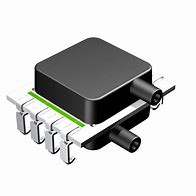Product Center
| Sensor
transducer (English name: transducer/sensor) is a detection device that can feel the information being measured, and can transform the felt information into an The existence and development of sensors, so that the object has the sense of touch, taste and smell, so that the object becomes alive, the sensor is the The sensor has the characteristics of miniaturization, digitalization, intelligence, multi-function, systematization, networking, etc. It is the primary The new aluminum nitride sensor can operate at high temperatures up to 900 ° C. Feature Light sensor - Vision Acoustic sensors - Hearing Gas sensor - Smell Chemical sensor - Taste Pressure sensitive, temperature sensitive, fluid sensor - touch Classification of sensitive elements: Physics, based on physical effects such as force, heat, light, electricity, magnetism and sound. Chemistry, based on the principles of chemical reactions. Biological, based on molecular recognition functions such as enzymes, antibodies, and hormones. Generally, according to its basic sensing function, it can be divided into ten categories such as thermal elements, photosensitive elements, gas sensitive sort By purpose Pressure and force sensors, position sensors, liquid level sensors, energy consumption sensors, speed sensors, acceleration sensors, In principle Vibration sensor, humidity sensor, magnetic sensor, gas sensor, vacuum sensor, biological sensor, etc. Per output Analog sensor: Converts the measured non-electrical quantity into an analog electrical signal. Digital sensor: Converts the measured non-electrical quantity into a digital output signal (including direct and indirect conversion). Pseudo digital sensor: The output of the measured semaphore into a frequency signal or a short-period signal (including direct or indirect conversion). Switch sensor: When a measured signal reaches a certain threshold, the sensor outputs a set low or high level signal accordingly. According to its manufacturing process Integrated sensors are manufactured using standard process techniques for the production of silicon-based semiconductor integrated circuits. Thin film sensors are formed by depositing a thin film of the corresponding sensitive material on a dielectric substrate (substrate). When the hybrid The thick film sensor is made of a slurry of the corresponding material coated on a ceramic substrate, which is usually made of Al2O3, and then Ceramic sensors are produced by standard ceramic processes or some variant of them (sol, gel, etc.). After the appropriate preparatory operation is completed, the formed components are sintered at high temperatures. There are many common Each process technology has its own advantages and disadvantages. Due to the low capital investment required for research, development By measurement Physical sensors are made using the properties of certain physical properties of the substance being measured to change significantly. Chemical sensors are made of sensitive elements that can convert chemical quantities such as composition and concentration of Biosensors are sensors that use the characteristics of various organisms or biological substances to detect and identify chemical components In its composition Basic sensor: It is the most basic single conversion device. Combined sensor: It is a sensor composed of different individual conversion devices. Application sensor: It is a sensor composed of a basic sensor or a combined sensor and other mechanisms. In action form According to the form of action can be divided into active and passive sensors. The active sensor has an action type and a reaction type, which can emit a certain detection signal to the tested object, and can detect the change Passive sensors only receive signals generated by the measured object itself, such as infrared radiation thermometers and infrared camera devices. |
